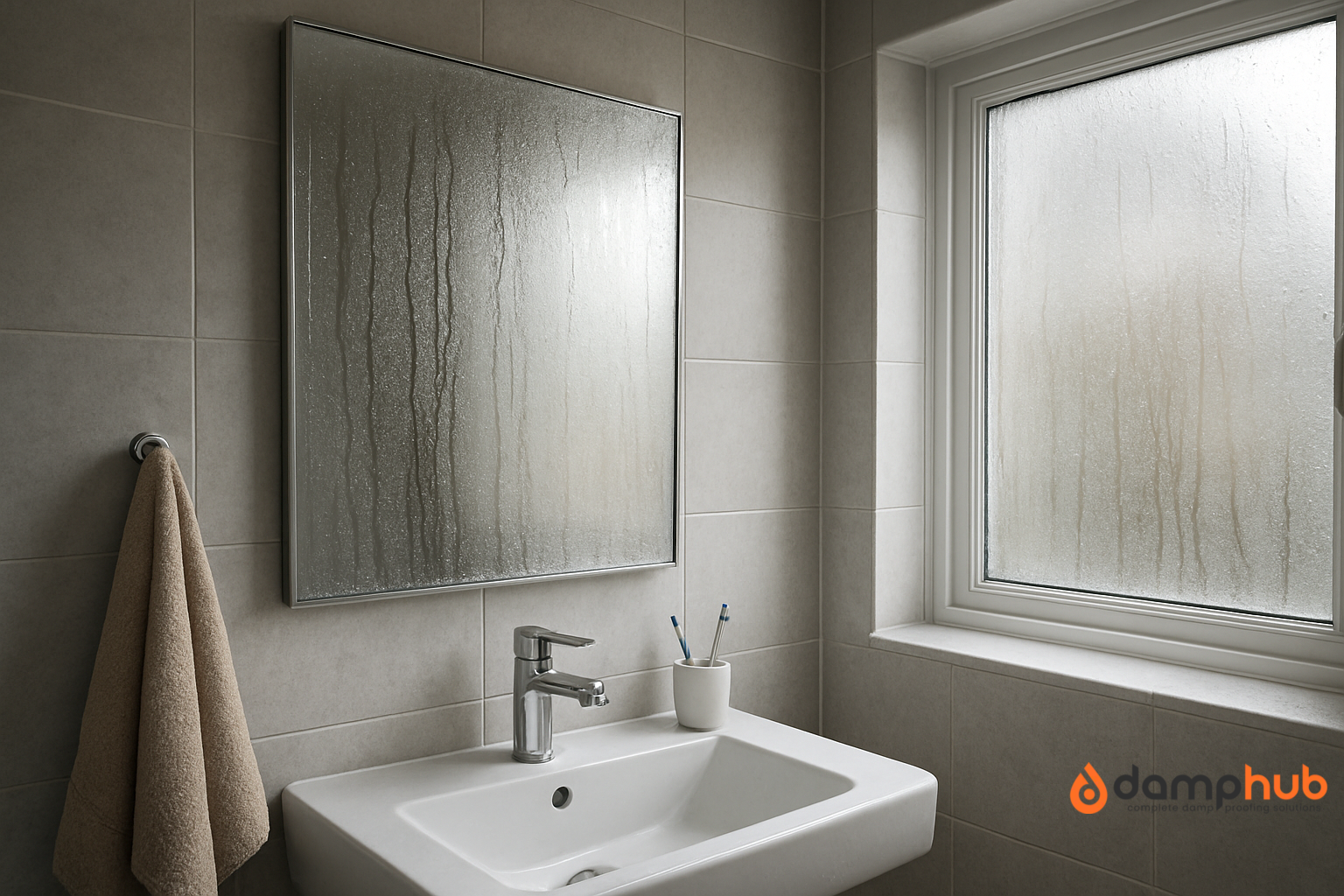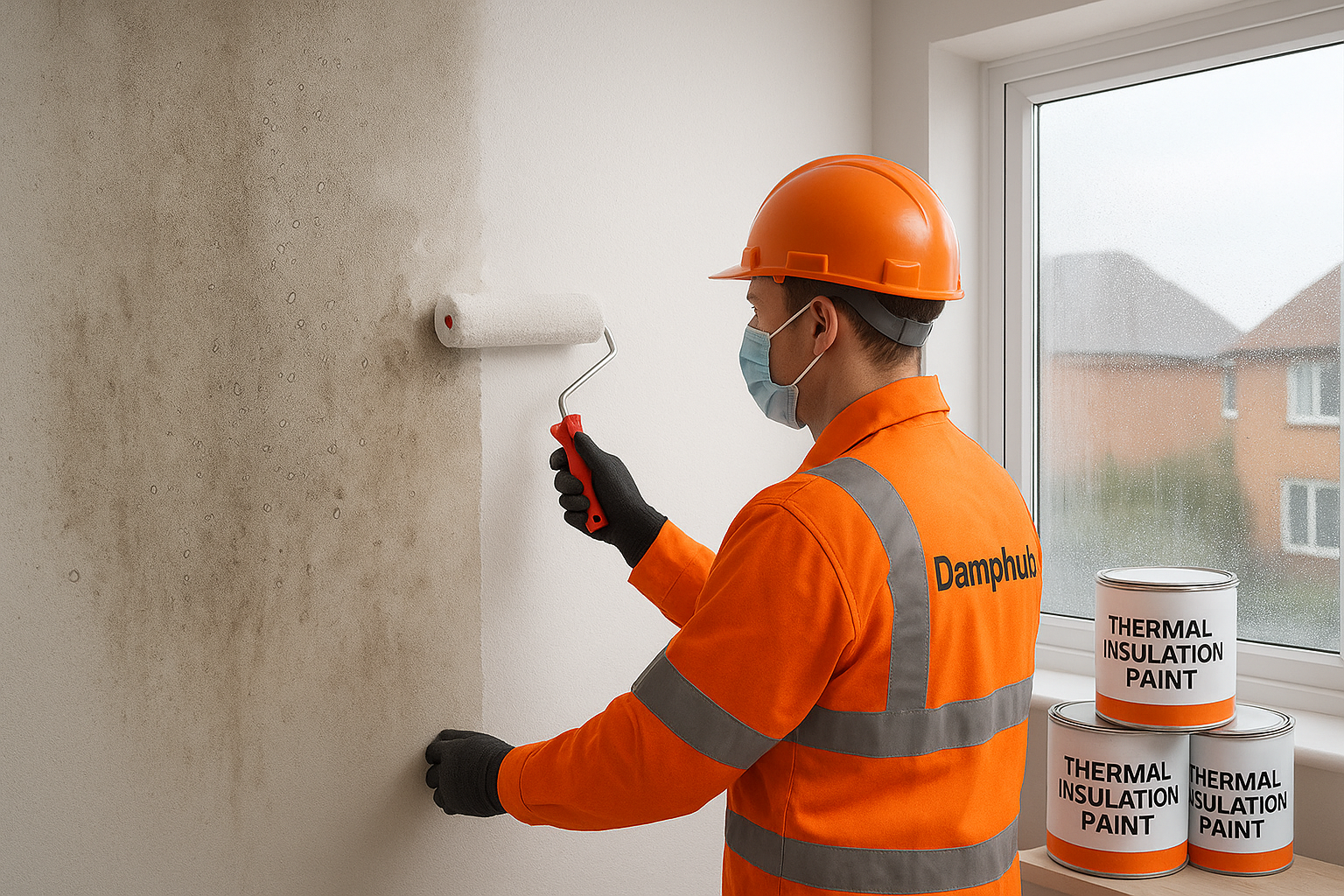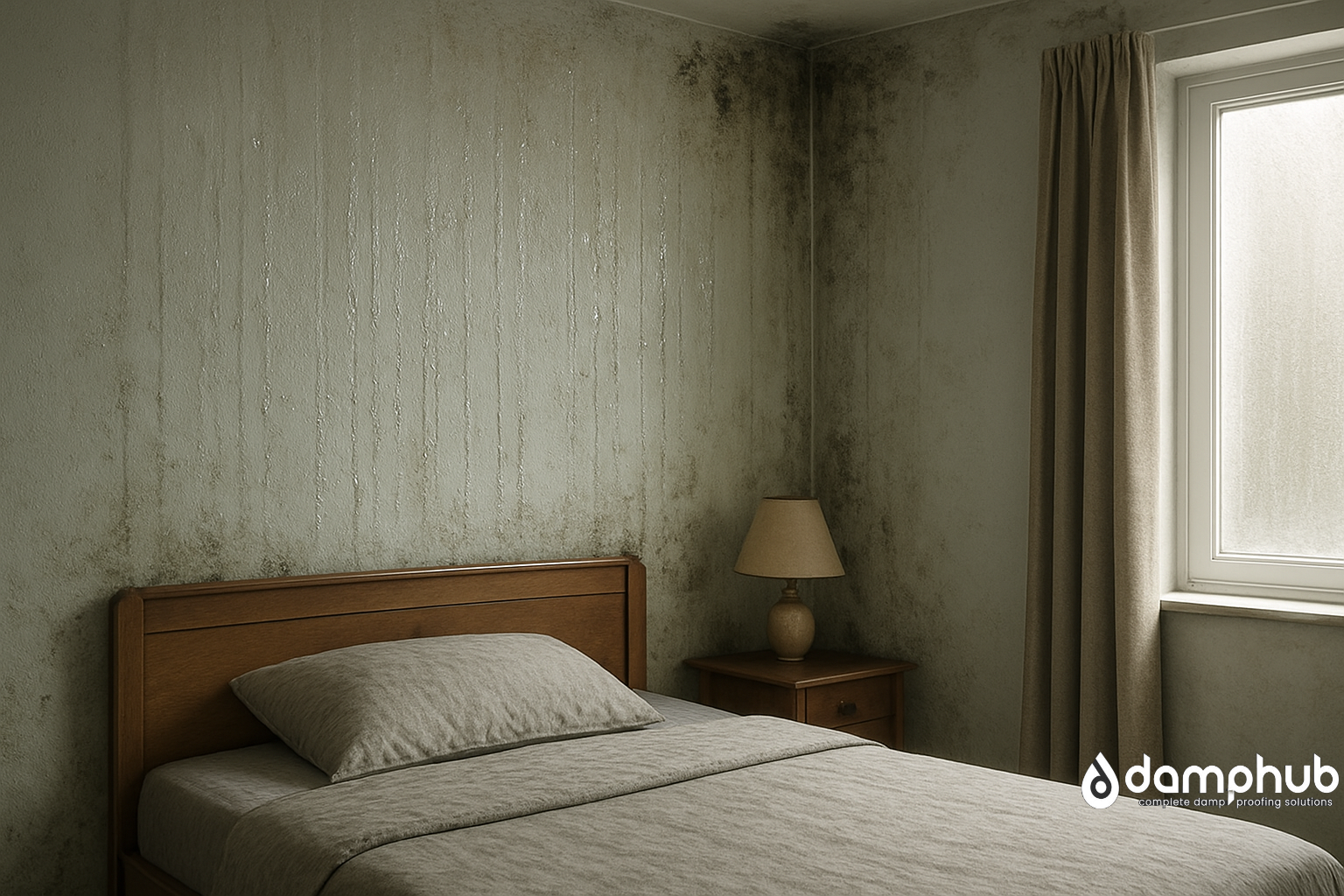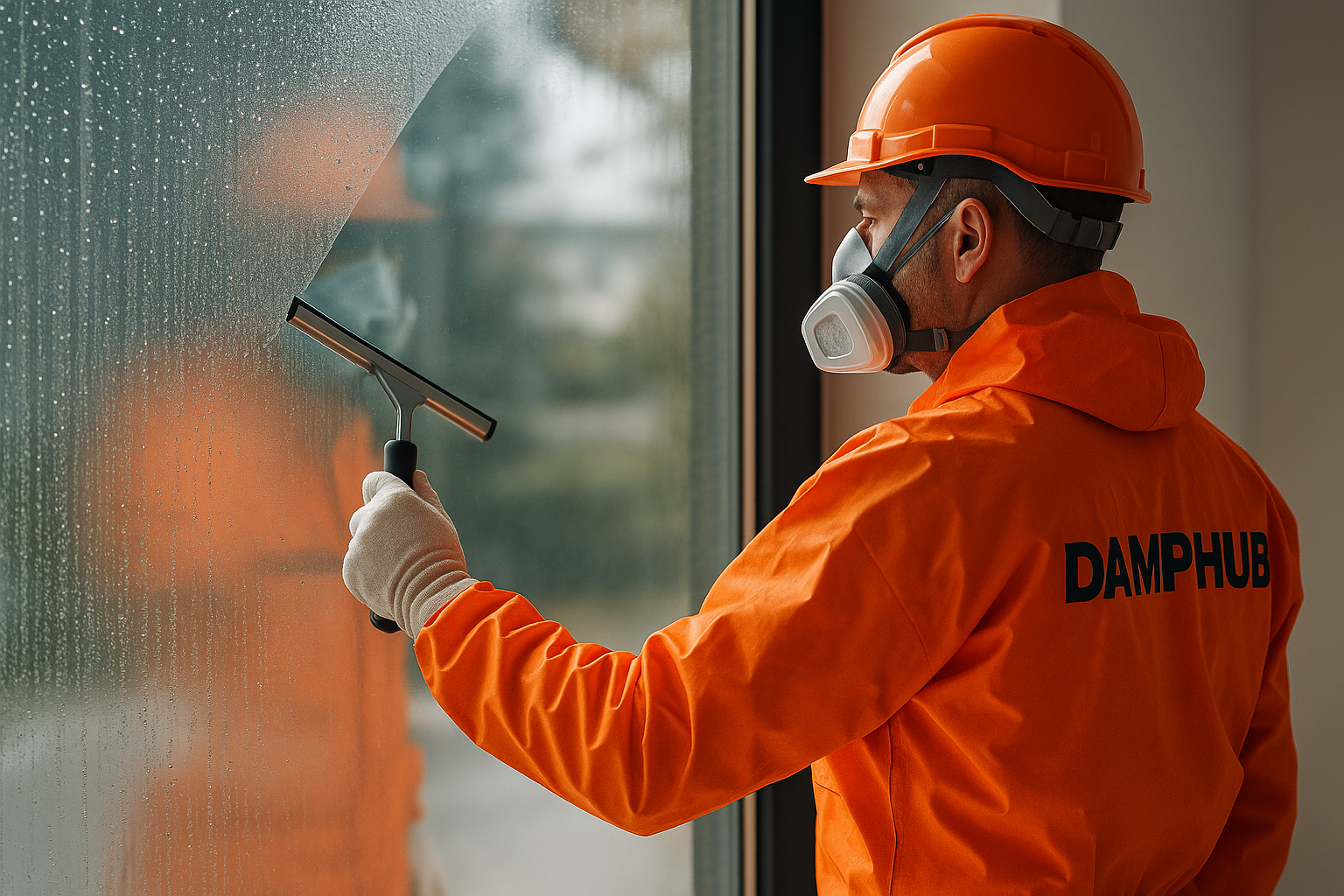
You’ve probably woken up to it before: water droplets clinging to the inside of your windows, damp sills that need wiping every morning, and that lingering worry in the back of your mind: is this just a nuisance, or will it cause real damage? How to stop condensation on windows overnight before the issue escalates?
We understand your urgency because window condensation overnight isn’t just about streaky glass. It’s a symptom of an imbalance in your home: too much moisture in the air, poor/or insufficient ventilation, and cold glass surfaces where it all comes to rest. If you don’t stop it early, overnight window condensation can create the perfect environment for mould and mildew, which can trigger respiratory problems and allergies.
Over time, the trapped moisture also seeps into window frames and surrounding walls, leading to rot, peeling paint, and costly structural repairs, all while lowering your indoor air quality.
The good news? With some practical adjustments and a bit of consistency, you can drastically reduce overnight window condensation—whether it’s in winter when houses are sealed up tight, or in the milder months when humidity sneaks in.
This guide walks you through why it happens, what you can do immediately, and the longer-term fixes worth considering.
If you’d like a deeper breakdown of the science behind it, you may find our main guide useful: What is Condensation?
Why Am I Getting Condensation on My Windows at Night?
At its simplest, condensation is science at work. Warm air can hold more moisture than cold air. When the warm, humid air inside your home meets the cold surface of your window, it cools down and releases that moisture as water droplets.
But the amount of condensation you see depends on several everyday habits and home conditions:
- Breathing while you sleep. A family of four can release more than 2 litres of water into the air overnight just by breathing.
- Evening showers or baths. Steam from bathrooms often drifts into bedrooms if the door is left open.
- Cooking in the evening. Boiling pots or steaming food adds humidity, especially if extractor fans aren’t used.
- Drying clothes indoors. This is one of the biggest culprits—wet laundry can release litres of water into the air overnight.
- Closed curtains and blinds. Warm, moist air gets trapped against the cold glass, condensing more easily.
So when you see condensation on your windows in the morning, it’s your house telling you: there’s more moisture in here than the current airflow and insulation can handle.
Our other posts you may like:
- Condensation on Outside of Windows: What It Really Means for Your Home
- Condensation Inside Windows: What It Means & How To Fix It
Can You Stop Condensation on Windows Overnight?
The short answer is: you can’t eliminate it in all situations, but you can control it to the point where it’s no longer a problem. The key is balance. You need to reduce the sources of moisture and improve airflow so that humid air doesn’t settle on your windows while you sleep.
Think of it as managing three levers:
- Humidity levels – the amount of water vapour in the air.
- Temperature – warm rooms reduce condensation because cold surfaces are less exposed.
- Ventilation – a constant exchange of stale, humid indoor air for fresher, drier outdoor air.
When you work on all three, condensation becomes a rare visitor instead of a daily battle.
How to Stop Condensation on Windows Overnight
Now, let’s dig into the practical steps you can take—from immediate habits to long-term upgrades.
Reduce humidity before bed
- Leave windows on the latch. If your windows have trickle vents or a latch setting, use them. This allows warm, moist air to escape without leaving the window wide open. It’s more secure than opening them fully overnight.
- Run a dehumidifier. A compact, quiet dehumidifier in the bedroom can make a world of difference. Modern models often have eco or night modes so they won’t disturb your sleep.
- Avoid drying clothes indoors. If you must, keep them in a room with an open window or a running dehumidifier.
- Close bathroom doors. After evening showers or baths, shut the door and keep the extractor fan running for 15–20 minutes.
- Limit indoor plants. While lovely to have around, clusters of houseplants do release moisture into the air.
Improve air circulation
- Crack open a window. Even a small opening before bed can lower indoor humidity if the outdoor air is drier.
- Circulate air with fans. A ceiling fan set on low (clockwise) helps push warm air down, improving circulation without creating a draught.
- Keep curtains and blinds open. Trapping warm air behind closed coverings makes condensation worse.
- Space out furniture. Pull beds and wardrobes a few inches away from external walls to avoid cold spots that attract moisture.

Take immediate action
- Wipe windows in the morning. Use a microfibre cloth or a window vacuum to remove water before it seeps into frames or walls.
- Dry window sills. Wooden sills, especially, can suffer long-term damage if left damp.
Consider long-term solutions
- Maintain consistent heating. Instead of letting the house cool down and then blasting the heat, aim for a steady, lower level of warmth.
- Add insulation film. Window film is a quick DIY fix that creates a warmer inner surface on glass.
- Upgrade glazing. Double or triple glazing is the most effective long-term solution for cutting condensation.
⚠️ Disclaimer
Always consider home security when leaving windows or vents open overnight.
How to Stop Condensation on Windows Overnight in Winter
Winter brings its own challenges. We shut our homes up tight to stay warm, which traps moisture indoors. Meanwhile, outdoor temperatures drop, leaving windows ice-cold—prime surfaces for condensation.
To prevent overnight condensation in winter, you need a focused routine:
- Ventilate safely. Use trickle vents or leave windows slightly ajar in secure settings rather than opening them wide.
- Run a night-time dehumidifier. Many modern units are energy-efficient and won’t ramp up your bills.
- Contain steam. Keep bathroom and kitchen doors closed, extractor fans on, and avoid cooking late in the evening if you can.
- Manage heat steadily. Keep radiators on low overnight rather than switching them off completely.
- Keep furniture away from cold walls. This prevents hidden damp patches behind beds or wardrobes.
🛠️ Try This
Run your ceiling fan on a low clockwise setting overnight in winter. It doesn’t make the room colder—instead, it pushes warm air down from the ceiling, keeping walls and windows warmer and less prone to condensation.
Does vinegar stop condensation on windows overnight?
You’ll often see vinegar suggested online as a way to deal with condensation. The truth? Vinegar can help clean mould or water stains caused by condensation, but it does not prevent condensation itself.
At best, wiping windows with a vinegar solution will discourage mould growth on damp frames. But the condensation—the droplets forming on cold glass—will keep happening unless you reduce humidity and improve airflow.
Think of vinegar as part of the aftercare, not the prevention plan.
Good To Know
Condensation isn’t just a cosmetic issue. Persistent moisture can lead to black mould, which releases spores into the air. These can aggravate asthma, allergies, and other respiratory problems. Tackling condensation is about health as much as it is about protecting your windows.
Final Thoughts
Condensation on windows overnight can feel like an unending battle, especially in winter when you’re trying to keep the warmth in. However, by making small changes—such as ventilating more, controlling humidity, and maintaining a steady temperature—you can protect your home from dampness and mould.
For most households, the fix isn’t one big expensive solution but a set of smaller, consistent habits. Use a dehumidifier if needed, wipe windows in the morning, keep bathroom steam contained, and think about long-term upgrades like insulation film or double glazing if condensation persists.
When you manage the moisture, your mornings start with clear glass instead of damp cloths—and your home stays healthier for it.
FAQs About Stopping Condensation on Windows Overnight

-
Why is condensation worse on bedroom windows?
Bedrooms are closed up for long hours, and with people breathing all night, humidity levels rise. With little ventilation, this moist air settles on cold windows.
-
Will keeping the heating on overnight stop condensation?
It helps, but it’s not a complete fix. Heating keeps windows warmer, reducing condensation, but you still need ventilation to remove excess humidity.
-
Can curtains or blinds cause condensation?
Yes. Closed curtains trap humid air against the cold glass, where it condenses more easily. Keeping them slightly open allows air to move freely.
-
Is a dehumidifier the best solution for condensation?
It’s one of the most effective short-term tools, but ideally, it should be combined with better ventilation and insulation for lasting results.
-
Does opening a window overnight make condensation worse?
It depends. If the outside air is more humid than indoors (which is rare in winter), it could add to the problem. But usually, outdoor air is drier, so even a slight crack in the window helps.






